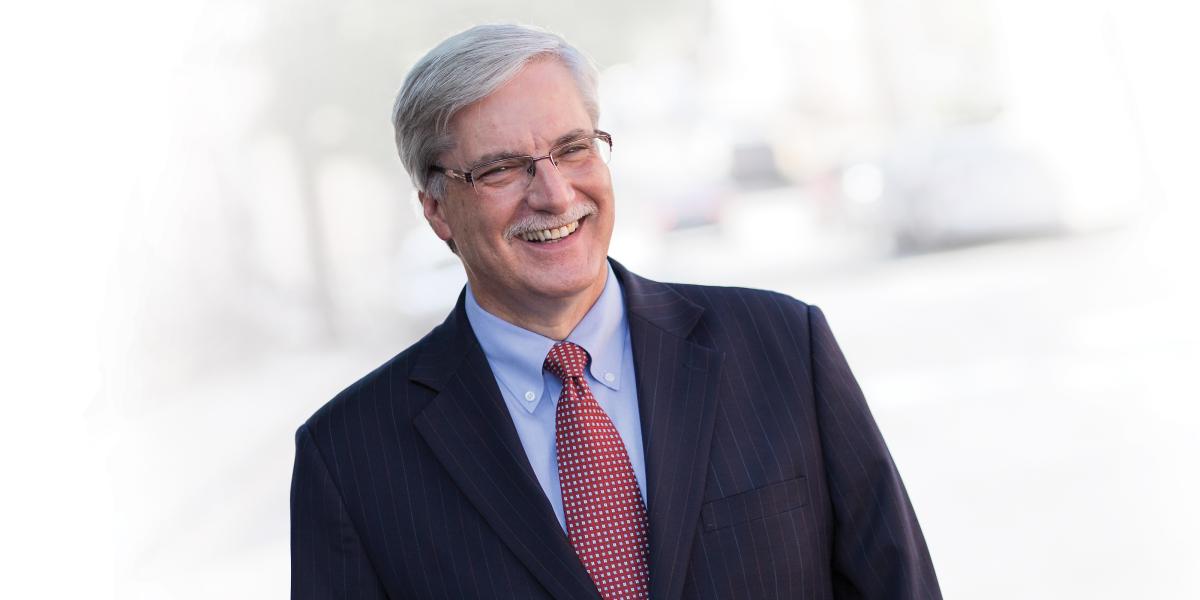Open Mike: Baltimore Together
Our School has the opportunity and the obligation to help find transformative solutions for our city.
When I first moved to Baltimore more than 30 years ago, dinner was often interrupted by sales calls from cemeteries offering to sell me a burial plot. My standard reply was, “I don’t plan to die in Baltimore.”
Over the last three decades, that has changed. I now own a nice plot on a shady hill near my home.
Baltimore does that to you. The openness and kindness of people here, from every race, ethnicity and social class, make it feel like home. In many ways, it is an easy city in which to live: relatively small, easy access to a wide range of cultural institutions, close to the Chesapeake Bay and the Atlantic.
Practicing primary care medicine here for decades meant that I got to know people from many city neighborhoods and many walks of life. Some of them ensured that I picked up important local skills, like how to pick crabs and eat soft-shell crabs. They made it feel like home.
For many, however, Baltimore may be home, but it is not such a great place to live.
Within this city, we have neighborhoods with the life expectancy of Sweden—83 years—and others where people can expect to live only to age 62. HIV/AIDS plays only a small role in these disparities. The primary causes of the differences are cardiovascular disease and cancer deaths—many of which are preventable. Poverty, unemployment, low education levels and crime cluster among neighborhoods and contribute as well. These inequities are not only morally unacceptable, they also have a profound effect on health.
Crime and how police deal with it have been a wound in the side of our community for years. In late April, the simmering resentment and frustration boiled over after the death of 25-year-old Freddie Gray, who suffered a spinal cord injury while in police custody.
Our faculty are well aware of Baltimore’s stark disparities and their effects. In fact, they helped collect the statistics and publicize them. Many faculty, staff and students live in the city and know the faces behind the numbers. We have over 100 funded programs in Baltimore that address the multiple determinants of health, and our students volunteer in more than 300 community organizations. Our Student Outreach Resource Center (SOURCE) has coordinated nearly 9,000 volunteers to work with the Baltimore community in the last 10 years. (See "Partners in Service").

Our entire School community is engaged in Baltimore in a big way. Mental Health associate professor Debra Furr-Holden, for example, has long been working on ameliorating health inequalities and designing environmental strategies to prevent and reduce community violence. Others apply the methods and skills that they have used in low- and middle-income countries right here at home. International Health’s Peter Winch, for example, is a polyglot professor best known for his research in Africa and Asia. But he also has projects here in Baltimore that study everything from police-youth programs to African-American youths’ swimming ability and how pools might be part of a solution to feelings of alienation and disenfranchisement, while providing summer recreation opportunities. Epidemiology Professor Susan Sherman has brought her experience working with marginalized populations in Thailand and Pakistan here to Baltimore to reduce HIV and related risk behaviors among drug users, sex workers and exotic dancers. The Johns Hopkins Urban Health Institute (UHI) has been working with the community to improve health for 15 years. Since 2008, just one of its programs has distributed 87 small grants funding faculty, students and residents to advance the health and well being of the residents of Baltimore. The School’s staff also daily engage with the community via UHI, the School’s Lighthouse Studies at Peer Point (a community-based research center) and other projects as well as through volunteerism.
This kind of deep engagement with the community is nothing new. In fact, it’s been part of the School almost since its founding in 1916. As we embark on the School’s Centennial year, we will have much to look back on with pride. In Baltimore and around the globe, our faculty, students and alumni have made and continue to make immense contributions to human health by using the power of public health: measuring the health of populations, defining risk factors, creating population-wide interventions and quantitatively assessing outcomes. You will soon be hearing more about Centennial events.
Our School’s work today is as important as it was when infectious disease ravaged Baltimore’s population a century ago. The root causes of health disparities persist though the outcomes may change. The events of late April and my personal reaction to them demonstrated to me how much I have become a part of Baltimore and how much Baltimore has become a part of me. Likewise intertwined with Baltimore, our School has the opportunity and the obligation to develop transformative solutions to the issues facing our community: racism, economic disadvantage, social inequity and overly aggressive policing strategies.
Our Centennial year has begun not with a celebration but with a call to action—it’s time to get to work!

May 2015
